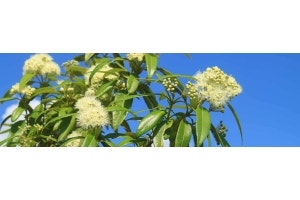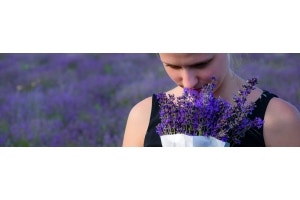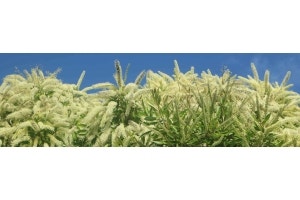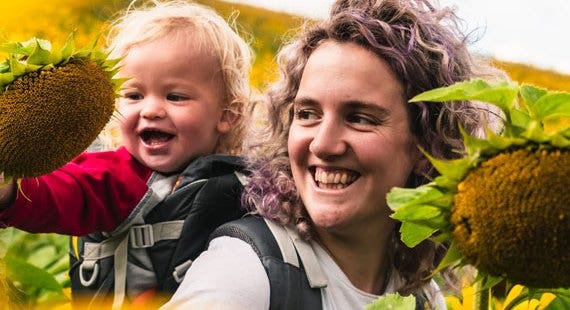
“You know," said Arthur, "it's at times like this, when I'm trapped in a Vogon airlock with a man from Betelgeuse, and about to die of asphyxiation in deep space that I really wish I'd listened to what my mother told me when I was young." "Why, what did she tell you?" "I don't know, I didn't listen.”Many of us get our knowledge of plants, learn our garden skills, or discover a love of nature at a young age, from adults who care for us. Eating grass, picking flowerheads, holding a worm - it all counts as gardening when you're little!Douglas Adams, The Hitchhiker's Guide to the Galaxy
And as you get older, there's nothing nicer than getting your hands dirty in soil and seeing something you planted, grow.
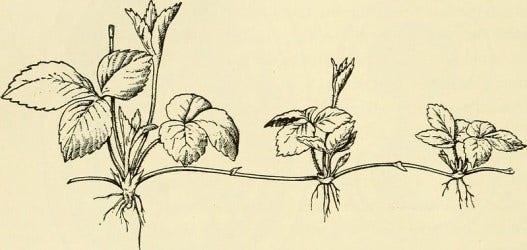
At Mother's Day, we celebrate all those caring people who share their love and knowledge of plants and gardening with us - at whatever age.
Show your love and gratitude to the nurturing people in your life in practical ways, by mowing their lawn, clipping their hedges, or weeding an overgrown bed. Everyone can use a little help around the garden!And if you have gardening know-how, pass it on to the next generations. Along with planting a tree for posterity, a love and understanding of nature is the best legacy you can leave them.
How plants pass on their genes
Here we look at how plants themselves ensure their next generation has the best start in life. And how plants reproduce to create that next generation - sometimes with a little help from the botanists!Parent Plants
 Kalanchoe Gremlin - the walking kalanchoe, spider plants (Chlorophytum), bugle, (Ajuga), and strawberries all produce long stems - called runners - which have little baby plants on the end.
These can root and grow independently into new plants.
They're easy to see on spider plants - a mature plant can look like a chandelier, it has so many babies hanging from it.
Kalanchoe Gremlin - the walking kalanchoe, spider plants (Chlorophytum), bugle, (Ajuga), and strawberries all produce long stems - called runners - which have little baby plants on the end.
These can root and grow independently into new plants.
They're easy to see on spider plants - a mature plant can look like a chandelier, it has so many babies hanging from it.
Aloes and some agaves produce runners in a different way, shooting up to create new plants from the roots, instead of from stems above ground. You can see top right this tubestock plant's roots have grown beyond the pot and are starting to form new leaves.
It's a way for mama to ensure the next generation is independent, while still making sure they get fed and cared for until they're big enough to grow it alone.
Wise parenting!
Find out here how we propagate our plants at the nursery in three different ways - by cuttings, by tissue culture, and by seed.
Plant Parents
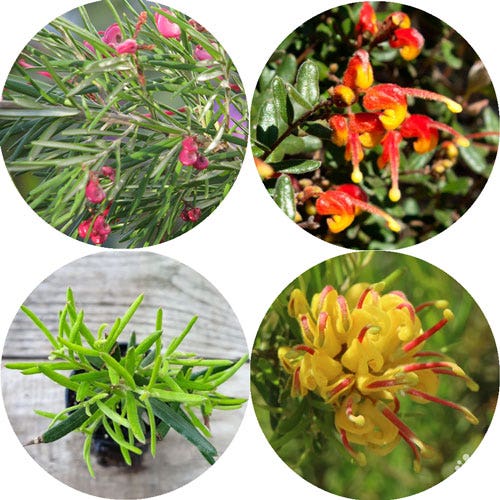 Hybrid plants - combining two separate species - can produce valuable new garden plants. And just like two people creating a third little person, the results can strongly favour one parent, be a blend of both, or something surprising and unexpected!
Hybrid plants - combining two separate species - can produce valuable new garden plants. And just like two people creating a third little person, the results can strongly favour one parent, be a blend of both, or something surprising and unexpected!
Grevillea Bonnie Prince Charlie and Fire Cracker both get their fine, slender rosemary-like foliage from their Grevillea rosmarinifolia parent, (top left);
and their small scarlet and yellow cats-claw flowers from their Grevillea alpina parent, (top right).The offspring share similar looks, just as siblings do.
Grevillea Bon Accord has one parent from the west coast - G. wilsonii - that grows in dry air and on sandy loam;
and one from the east coast - G. johnsonii - that likes humid air and rocky places.
This makes Bon Accord more adaptable to and tolerant of a wider range of climates and soil conditions, and so more useful to a greater number of gardeners.
Rosmarinifolia image: Peganum; Alpinia image : Rexness; cropped to size.
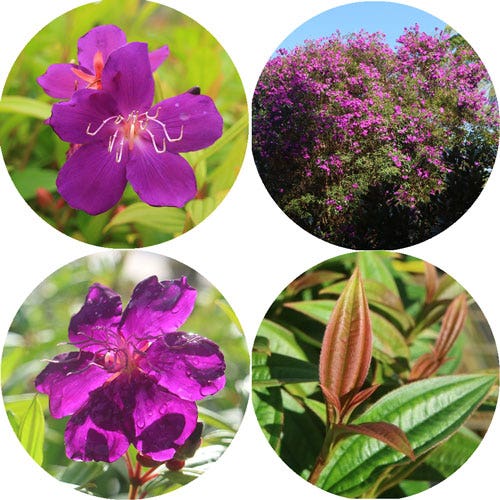 Hybrids of species are very handy, especially in tough situations. Tibouchina Purple Star (shown in flower bottom left) is a perfect blended mix of both its parents.
Hybrids of species are very handy, especially in tough situations. Tibouchina Purple Star (shown in flower bottom left) is a perfect blended mix of both its parents.
It's up to twice the size, and with brighter purple flowers, than its petite parent Tibouchina heteromalla Jazzie, (top left); and smaller in size and with deeper-coloured flowers than its fast-growing tree-sized parent Tibouchina lepidota Alstonville, (top right).
On the way, it's picked up a new distinguishing characteristic of its own, the rich coppery chestnut-coloured new leaves. Sometimes hybrids produce surprises!
Purple Star is a very disease resistant variety - like mongrel pups compared to pedigree dogs, hybrid plants can often be more resilient than pure-bred species.
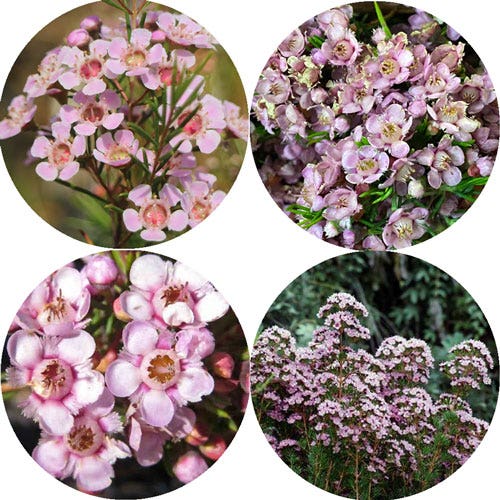
Paddy's Pink is a beautiful hybrid between two dry-climate natives :
Geraldton wax Chamelaucium (top left),
and feather flower Verticordia (top right).
The combination of the two creates a big bushy shrub the size of a Geraldton waxflower bush;
with abundant dense rounded clusters of flowers just like a featherflower bush.
Look closely at the image bottom left, and you'll see that each Paddy's Pink flower has a feathery set of outer petals inherited from its Verticordia featherflower parent.
Closeup flower image: NHQ; bush image : Wildtech; cropped to size.
Plant Babies
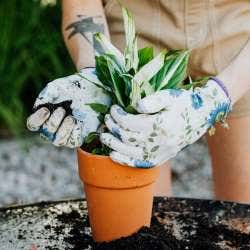 Many gardeners like us get a sense of motherly pride when our plant babies thrive and do well.
A new leaf, a flower bud, a growth spurt - these are milestones to be celebrated and cherished!
Many gardeners like us get a sense of motherly pride when our plant babies thrive and do well.
A new leaf, a flower bud, a growth spurt - these are milestones to be celebrated and cherished!Just like children, some plants need more attention and special treatment than others, to flourish. However self-reliant they are, all plants (and children!) grow better with a little loving care.
Take good care of your plants and raise them well - with regular feeding and watering, making sure they're healthy, pruning and shaping them, and giving them room to grow. Our Gardening Basics posts will give you the tools to get your baby plants off to a good start in life.
“Being a mother is an attitude, not a biological relation.” Robert A. Heinlein












